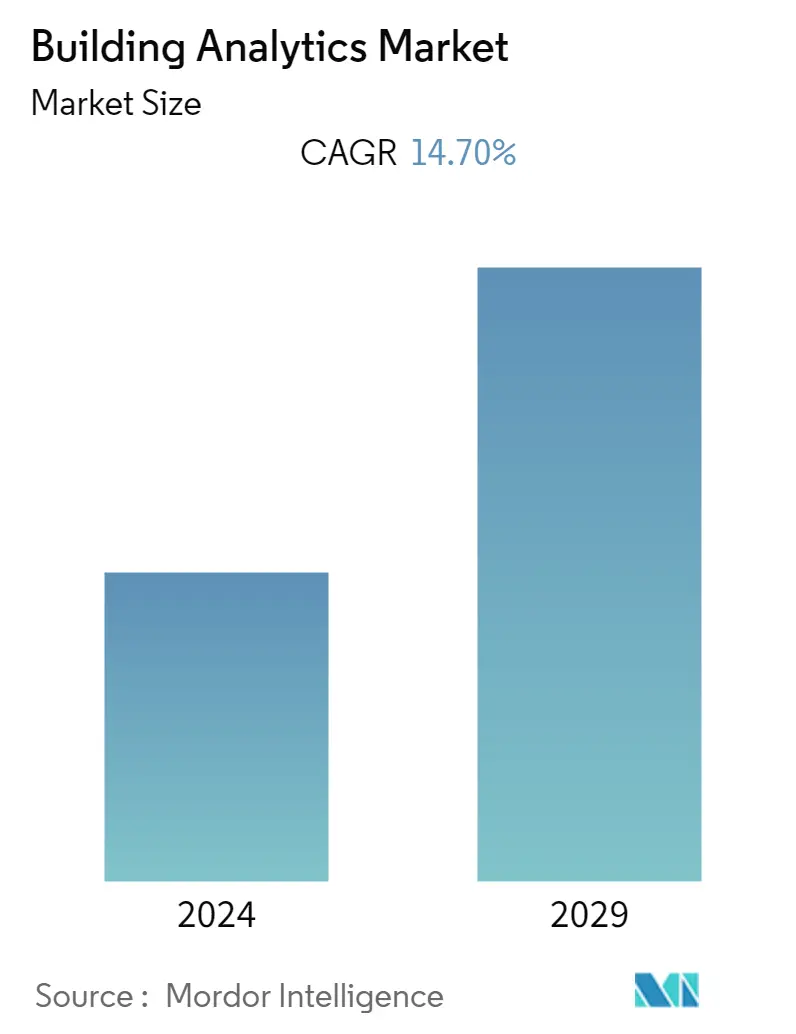Market Size of Building Analytics Industry

| Study Period | 2019 - 2029 |
| Base Year For Estimation | 2023 |
| Forecast Data Period | 2024 - 2029 |
| CAGR | 14.70 % |
| Fastest Growing Market | Asia Pacific |
| Largest Market | Asia Pacific |
Major Players
*Disclaimer: Major Players sorted in no particular order |
Need a report that reflects how COVID-19 has impacted this market and its growth?
Building Analytics Market Analysis
The Building Analytics Market is expected to grow at a CAGR of 14.7% over the forecast period 2021 to 2026. Due to the discernment of business intelligence among emerging countries, demand for building analytics solutions is proliferating. Governments and many vendors are readily investing in technologies in construction services, principally engineering, and architecture. Moreover, an improvement in the adoption of smart building and cloud computing technologies are strengthening the growth of the building analytics market.
- The energy management use is expected to govern the overall building analytics market in terms of share and growth rate, as it is predominantly finding its use in all building facilities to reduce excessive energy consumption across premises. Constant progress in the information & communication technology market owing to innovative efforts have intensified the efficiency of building the analytics market.
- As the world's urban population grows by more than 2.5 billion, primarily to urban areas by 2050, according to MDPI, the construction of new, energy-efficient buildings and cities will be essential to the transformation of the economy. Moreover, the building and construction sector must be decarbonized by 2050 to meet the Paris Agreement's goals.
- The current energy performance of the building sector is weak. In the European Union (EU), with buildings accounting for nearly 40% of its energy consumption, the building sector should play a key role in effective climate policy.
- The trends such as the needs for a variety of buildings value chain (BVC) stakeholders, steadily increasing momentum of big data and their related technologies, combined with AI, namely the new 'engine' of the Fourth Industrial Revolution and IoT infrastructure management enablers constitute a catalyst towards conceptualizing and creating innovative applications and services for energy management and energy-efficient buildings.
- However, the requirement for additional expenditure to avail building analytics services is anticipated to hinder the building analytics market in the next few years. The absence of awareness for building analytics is one of the constraints of the building analytics market.
- Nevertheless, with notable growth in the population across the globe, construction activities are expected to rise substantially. This is projected to generate potential growth possibilities for the building analytics market in the upcoming years.
